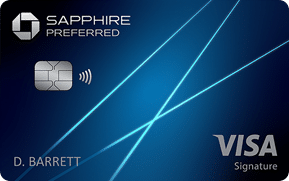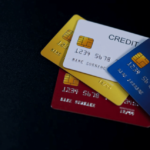For many, the journey to financial stability is marred by the hurdles of bad credit. This situation frequently results in a difficult cycle: you need strong credit to obtain a credit card, but you also need a credit card in order to improve your credit.
This paradox leaves many feeling stranded on their financial journey.
However, the landscape is not devoid of hope. Understanding the challenges and opportunities associated with bad credit is the first step toward turning the tide.
Obtaining a credit card, despite a low credit score, isn’t just about access to funds; it’s a pivotal step in rebuilding financial health.
It all comes down to picking a credit card that will help you build and maintain your credit over time in addition to accepting applications from those with bad credit.
In this guide, we’ll explore how the right credit card can be a powerful tool in your financial arsenal, helping to gradually elevate your creditworthiness.
We’ll delve into the nuances of what to look for in a credit card for bad credit and how to use it responsibly to set the foundation for a healthier financial future.
Remember, navigating the realm of credit with a less-than-ideal credit history is challenging, but with the right approach and information, it can be a journey of empowering financial transformation.
For those with a less-than-ideal credit history, selecting the appropriate credit card can be a crucial first step toward repairing credit. The industry offers a wide range of credit cards designed especially for people with bad credit.
These cards come with varying features and terms, meant to assist customers improve their credit scores over time
Here’s a brief overview of some popular credit cards for bad credit, highlighting their key features and benefits.
Capital One Secured Mastercard: This card is a wonderful choice for anyone trying to rehabilitate credit because of its low deposit requirement. It offers an initial low credit limit that can increase over time with responsible use.
Discover it Secured Credit Card: Find it out Credit Card that is Secured: This secured card is special since it offers cash-back benefits and a way to switch to an unsecured card. Regular reviews of your account can lead to a returned deposit while you continue building credit.
Credit One Bank Unsecured Visa for Rebuilding Credit: The advantage of this choice is that there is no need for a security deposit. It typically comes with a higher APR but includes cash back rewards on certain purchases.
Secured Mastercard from Citi: This card requires a deposit, which generally equals the credit limit. It’s a straightforward option for building credit, with the potential for a credit limit increase without an additional deposit.
OpenSky Secured Visa Credit Card: Visa Credit Card with OpenSky Security: This card is notable for being available to those with extremely low credit ratings and not requiring a credit check. It requires a deposit and offers standard credit-building capabilities.
Understanding Credit Cards for Bad Credit
What Constitutes bad Credit?
A poor credit score—often the result of prior financial errors like late payments, defaults, or bankruptcy—is sometimes referred to as “bad credit.” Your creditworthiness is reflected in this score, which affects how eager lenders are to provide you loans.
Understanding your credit score is crucial to identifying the right financial products tailored to your situation.
Types of Credit Cards for Bad Credit
When it comes to credit cards, those with bad credit have two primary options: secured and unsecured credit cards.
- Credit cards that are secured: These cards call for a security deposit, which frequently serves as your credit limit.
- They are designed to minimize risk for the lender, making them more accessible for individuals with low credit scores. The deposit is usually refundable, and responsible use can lead to an improved credit score, potentially leading you to an unsecured card.
- Unsecured Credit Cards: These cards could have higher interest rates and fees but don’t need a security deposit.
- They are a testament to the lender’s trust in your ability to repay, despite your credit history. Unsecured cards for bad credit might offer lower credit limits initially, but with responsible use, you can rebuild your credit and qualify for better terms over time.
The first step in selecting a credit card that fits your existing credit position and financial objectives is to comprehend these possibilities.
Remember, the right card can be a tool for rebuilding your credit, opening doors to more financial opportunities in the future.
Key Features to Look For in Credit Cards for Bad Credit
There are a few important factors to take into account when selecting a credit card for bad credit:
1. Low Fees and Competitive APRs:
It’s essential to look for a card with minimal fees. This covers annual, late, and international transaction fees. A competitive annual percentage rate (APR) is also crucial. Lower APRs can reduce the amount you pay in interest, making the card more affordable in the long run.
2. Opportunities for Credit Limit Increases:
Credit cards that let you raise your credit limit are a good thing. An increased credit limit, when used responsibly, can lower your credit utilization ratio, a key factor in your credit score. Some cards review your account periodically and may offer a higher credit limit based on your payment history and creditworthiness.
3. Reporting to Credit Bureaus:
Ensure that the card issuer reports to all three major credit bureaus – Experian, Equifax, and TransUnion. Regular reporting of your credit activity helps in building your credit profile. Consistent, on-time payments and responsible card use reflected in these reports can gradually improve your credit score.
Selecting a credit card with these features can be a strategic step towards rebuilding your credit and enhancing your financial health.
Top Picks for Bad Credit Credit Cards
When selecting a credit card for bad credit, it’s important to choose one that aligns with your financial needs and goals. While I can’t recommend specific cards, here are some general types of cards that are often recommended for bad credit:
Secured Credit Cards: These typically require a deposit which becomes your credit limit. Look for options with low annual fees and the possibility of transitioning to an unsecured card after a period of responsible use.
Unsecured Cards for Bad Credit: These cards don’t require a deposit but might come with higher APRs. They are suitable for those who want to avoid upfront costs.
Cards with Credit Building Features: Some cards offer features like free credit score tracking or financial education resources, which can be incredibly beneficial for those looking to improve their credit.
Store Cards and Gas Cards: These are often easier to get approved for and can help build credit, but be aware of their high-interest rates and limited usability.
Remember, the best card for you depends on your individual financial situation and goals. Be sure to research and compare different options, focusing on features like APR, fees, credit limit, and credit reporting to the bureaus.
For specific card recommendations, you might want to consult financial websites that regularly update their lists of top credit cards for bad credit.
How to Improve Your Credit Score with a Credit Card
Improving your credit score using a credit card involves responsible usage and strategic financial management. Here are some key strategies:
On-Time Payments: Never forget to pay your credit card account on schedule. Your credit score may be negatively impacted by late payments. Making automated payments or setting up reminders will help you never forget a deadline.
Credit Usage: Maintain a modest credit utilization ratio (preferably less than 30% of your total credit limit). Lenders can see from this that you can appropriately manage credit without using all of your available credit.
Frequent Observation: Pay attention to your credit report and credit card statements. This will enable you to monitor your development and identify any mistakes or fraudulent activity early on.
Increases in Credit Limits Gradually: Ask for a greater credit limit as your credit score rises. As long as you keep your spending the same, this can help you reduce your credit utilization ratio even more.
Various Credit Categories: Think about changing up the mix of your credit over time. Installment loans and other credit are examples of this, and they can both improve your credit score.
Rebuilding credit is a process that requires patience and time. One crucial stage in this process is using credit cards consistently and responsibly. Using Poor Credit to Apply for a Credit Card
Applying for a credit card when you have bad credit might be risky:
Prequalification Process: Using a prequalification process that many issuers offer won’t affect your credit score, you can determine your chances of approval. This is frequently a soft inquiry, which has no effect on your credit score in contrast to a hard inquiry.
Comprehending the terms and conditions: Any credit card’s terms and conditions should be carefully studied and understood. Be mindful of the fees, interest rates, and other expenses linked to the credit card.
Reasonable anticipations: To improve your chances of getting approved, pick a card that complements your credit profile.
Submission of an Application: After you’ve selected a card that suits your needs, finish the application procedure, which may involve giving your financial information and agreeing to a credit check.
Steps Following the Application: Use the card sensibly to begin restoring your credit if it is accepted. Before reapplying, review the reasons for the denial and take action to raise your credit score.
By carefully following these procedures, you can enhance your credit and raise your chances of approval. Beyond Credit Cards: Establishing a Sound Credit Record
It takes more than just handling credit cards to establish a good credit history. Here are a few more actions to take:
Various Credit Categories: Diversify your credit portfolio, if possible. This could apply to debts with installment payments, such auto or school loans. Your credit score can be improved by having a variety of credit types.
Frequent Verifications of Credit Reports: Check your credit reports on a regular basis for fraud or mistakes. Every credit bureau is required to provide you with a free report once a year.
Debt management: Make an effort to pay down your outstanding loans, particularly the higher interest ones. Reduced debt can raise your credit utilization ratio and, in turn, your credit score.
Paying bills on time: Pay all of your bills on time, not just the ones from your credit card, every time. A late payment on a loan, utility bill, or rent might lower your credit score.
Making the Switch to Better Cards: Applying for credit cards with higher terms and bonuses should be considered as your credit gets improved. Reward schemes, increased credit limits, and reduced interest rates are a few examples of this.
Recall that establishing a solid credit history is a journey, not a sprint. The secret to success is persistence in sound financial practices and patience. With the Correct
Credit Card, Take Financial Empowerment to New Heights
Selecting the ideal credit card for someone with bad credit might be a game-changer for your financial situation. It not only offers a way to handle money better, but it also makes it possible to improve and repair your credit score.
These cards can be an important addition to your financial toolbox if you manage your credit responsibly, which includes making on-time payments and using credit responsibly.
Recall that obtaining better credit is a gradual process, and that every step you take now, with the correct credit card, can lead to a more favorable financial future.
The advantages will eventually become apparent if you remain dedicated to using prudent credit habits.


